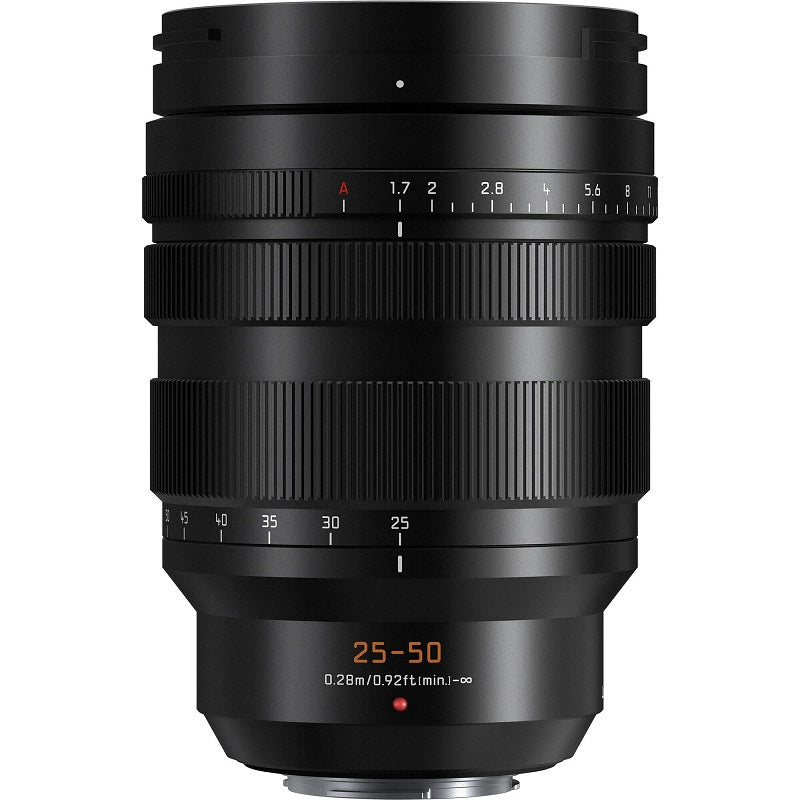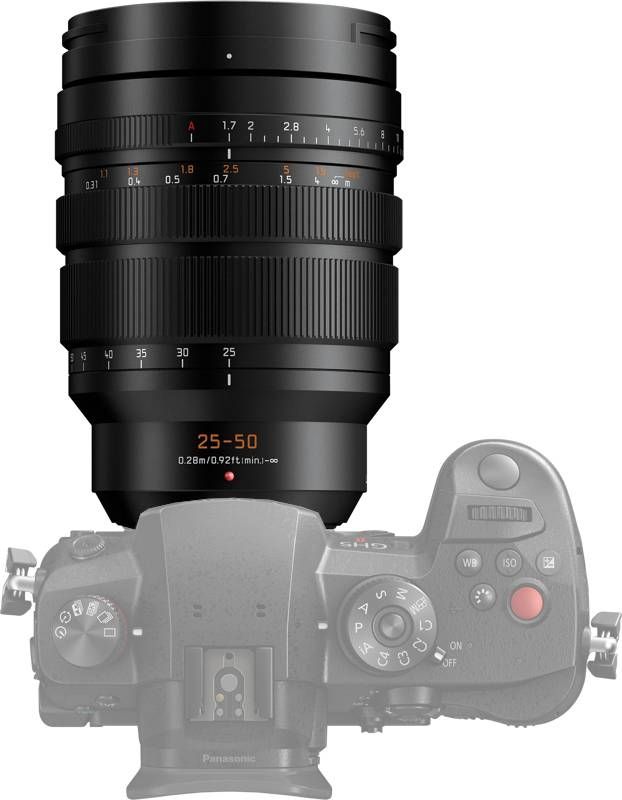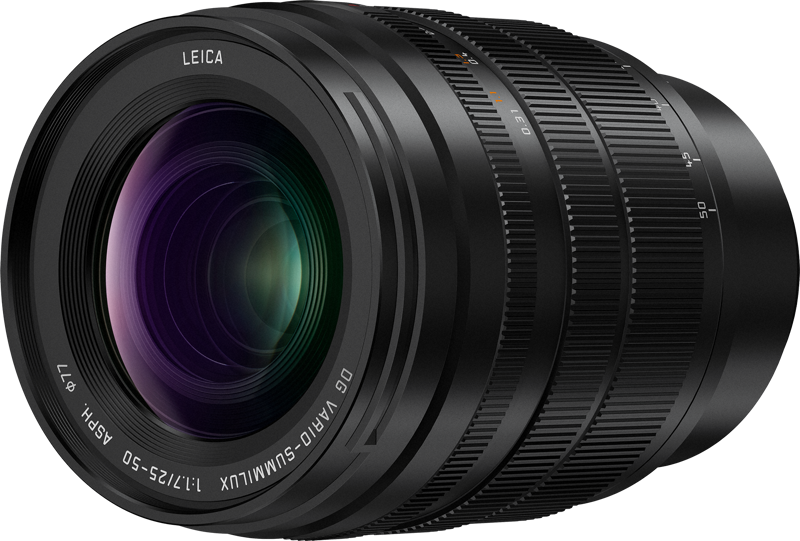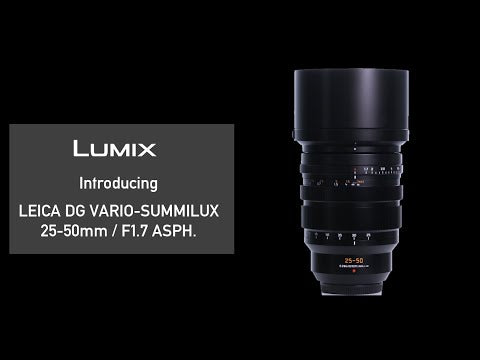Product Description
Panasonic 25-50mm f1.7 Leica DG Vario-Summilux ASPH. Lens
- Exceptionally high optical performance to LEICA standards
- Continuous F1.7 aperture that provides beautiful bokeh
- Suppressed focus-breathing for smooth video production
- Rugged splash-proof construction for use down to minus 10 C
- 77mm Filter Size
The Panasonic LEICA DG VARIO-SUMMILUX 25-50mm F/1.7 ASPH (H-X2550) is the World’s first telephoto zoom lens that boasts a large F/1.7 aperture throughout the entire 50-100mm (35mm camera equivalent) zoom range.
It provides exceptionally high optical performance that conforms to the stringent LEICA standards.
The new lens is suitable for professional photographers and videographers and is designed to pair perfectly with the LEICA DG VARIO-SUMMILUX 10-25mm F/1.7 ASPH. These two lenses cover a focusing distance from wide-angle to telephoto, functioning as eight fixed focal length lenses (20mm / 24mm / 28mm / 35mm / 50mm / 75mm / 85mm / 100mm, 35mm camera equivalent) providing the same or an even higher level of quality than a fixed focal length lens can offer. Both lenses feature the full-range, F1.7, wide aperture that provides beautiful bokeh, while still offering a common aperture shape and operability to enable minimal post-production workflow.
Comprising 16 elements in 11 groups, the lens system features an aspherical lens and three ED (Extra-low Dispersion) lenses that effectively suppress the axial chromatic aberration and chromatic aberration of magnification. Spherical aberration and distortion are also corrected by the aspherical lenses for stunningly high resolution. The use of aspherical lenses and the optimum design of the lens system results in a compact size and lightweight despite its outstanding optical performance.
Notably, the new lens excels in video recording performance with a mechanism that suppresses focus breathing at the entire zoom range. In addition to the silent operation achieved by the inner focus drive system, the stepless aperture ring and micro-step drive system in the aperture control section help the camera to smoothly catch up to brightness changes when zooming or panning.
The optical design minimises image shifts during zooming while the focus ring is equipped with a manual focus clutch to ensure intuitive and precise focusing. The lens boasts a minimum focusing distance of 0.28m to 0.31m and a maximum magnification ratio of 0.42x (35mm camera equivalent) for superior macro photography. The lens can also be switched between linear and non-linear focus settings.
The rugged dust/splash-resistant construction will withstand use under harsh conditions even at minus ten degrees Celsius. The filter size is 77mm.
For full specifications click Here

























